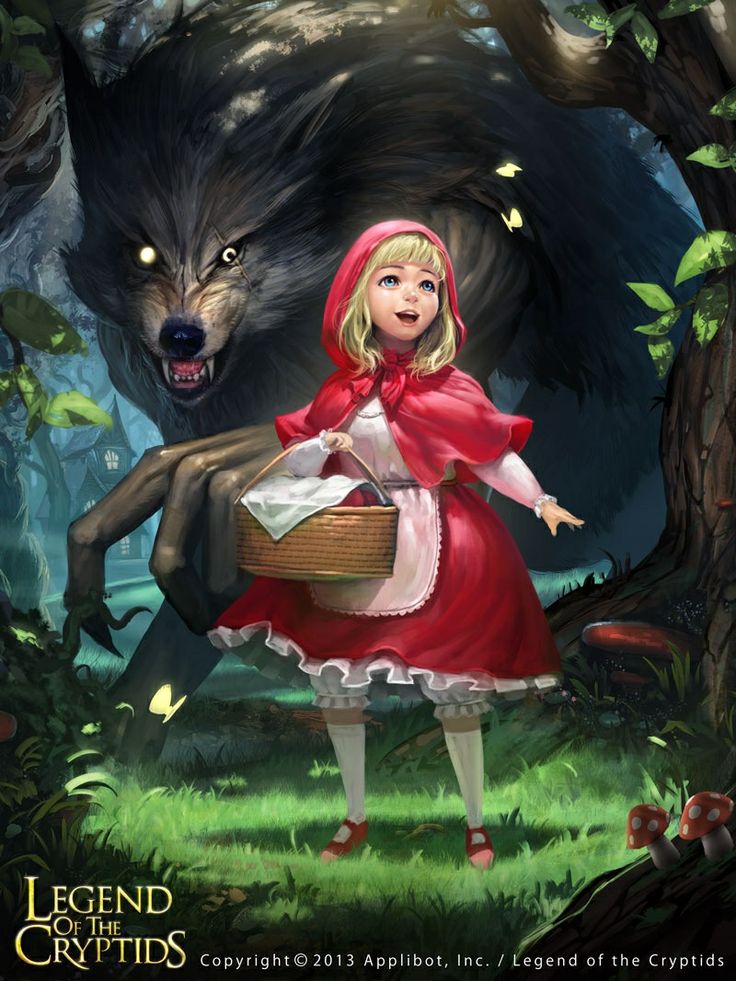Little red ri
Personalized Little Red Riding Hood Story For Kids
Personalized classic tale
Personalize now Personalize now
Recommended for 5 year-olds and under In this new version of the classic, the kids will join Little Red Riding Hood in an amazing adventure!
$39.90 Hardcover
$39.90 Hardcover
Recommended for 5 year-olds and under In this new version of the classic, the kids will join Little Red Riding Hood in an amazing adventure!
Book Overview Awesome Experience Quality and Dimensions
The book Experience Dimensions
An adventure at Grandma's house
Your little one becomes the main character in tales that have crossed generations. Along with Little Red Riding Hood, they will discover the truth behind the Big Bad Wolf. Create your personalized book and have fun with this new version of the classic story.
Your child inside this wonderful story with Little Red Riding Hood
Making your child the protagonist in this book is easy! Create the character with your child’s features: skin tone, hair, eyes, clothing, and shoes. Then just check the result, receive your book at home, and enjoy reading along with your loved one!
Personalized Little Red Riding Hood Book
Little Red Riding Hood
Little Red Riding Hood is a kind and innocent little girl. She loves to visit her grandma who lives in the forest, bringing her delicious sweets and bread. She never leaves home without her red hood, which was a special gift from Grandma. However, one day she disobeys her mother and learns a great lesson.
Origin Of The Story
The classic tale of Little Red Riding Hood originated from European fables of the 20th century, its best-known version was published by the Brothers Grimm. Over the years the story has spread to several countries and has undergone numerous adaptations, making it one of the most well-known fables in the world.
What Children Will Learn
The story of Little Red Riding Hood has many lessons. The main message for children is to obey adults and how trusting strangers can be dangerous. The tale also shows that appearances are deceiving and that sometimes a path may seem easier, but it is not always the best one to follow.
Little Red Riding Hood
Little Red Riding Hood is a kind and innocent little girl. She loves to visit her grandma who lives in the forest, bringing her delicious sweets and bread. She never leaves home without her red hood, which was a special gift from Grandma.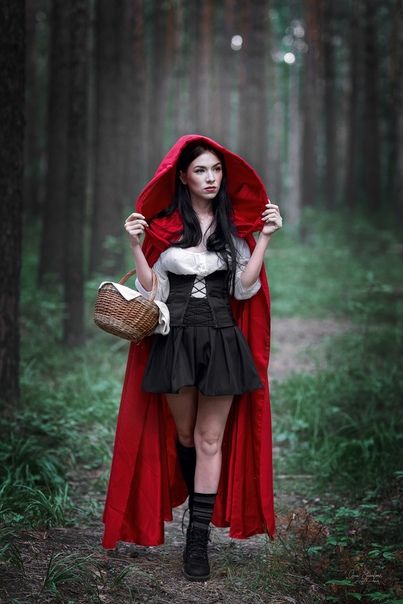 However, one day she disobeys her mother and learns a great lesson.
However, one day she disobeys her mother and learns a great lesson.
Origin Of The Story
The classic tale of Little Red Riding Hood originated from European fables of the 20th century, its best-known version was published by the Brothers Grimm. Over the years the story has spread to several countries and has undergone numerous adaptations, making it one of the most well-known fables in the world.
What Children Will Learn
The story of Little Red Riding Hood has many lessons. The main message for children is to obey adults and how trusting strangers can be dangerous. The tale also shows that appearances are deceiving and that sometimes a path may seem easier, but it is not always the best one to follow.
The experience goes beyond reading
To make the experience last beyond the story, you will receive the book along with our special Little Reader's certificate.
Personalized book
Personalization creates greater connection between the child and story, stimulating their interest in reading.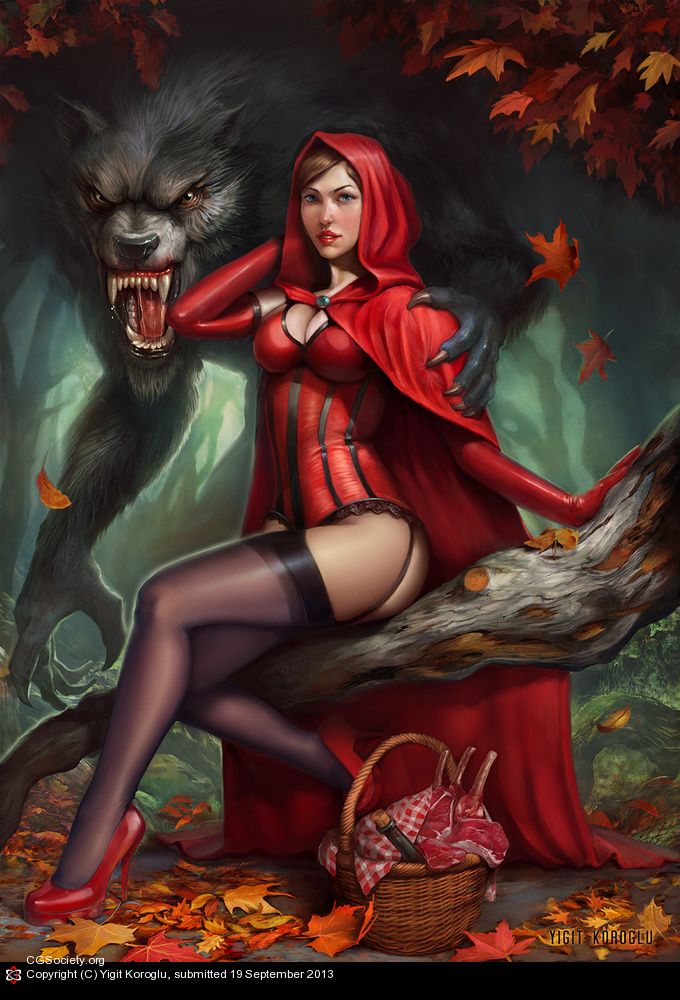
Reader's certificate
With the child's signature it becomes a special memory which celebrates your child's passion for reading.
A unique gift of impeccable quality
The personalized book Personalized classic tale has 36 pages of 8.5” x 11” (222mm x 286mm), printed on US A4 letter. The hardcover is 8.75” x 11.25” , uncoated and sustainable (FSC certified).
The hardcover helps guarantee the quality and durability of the books to preserve these special memories forever!
More Playstories books to make your child feel special
Best-seller
Best-sellerThe Tale of the Three Little Pigs
Personalized version of the classic!
$39.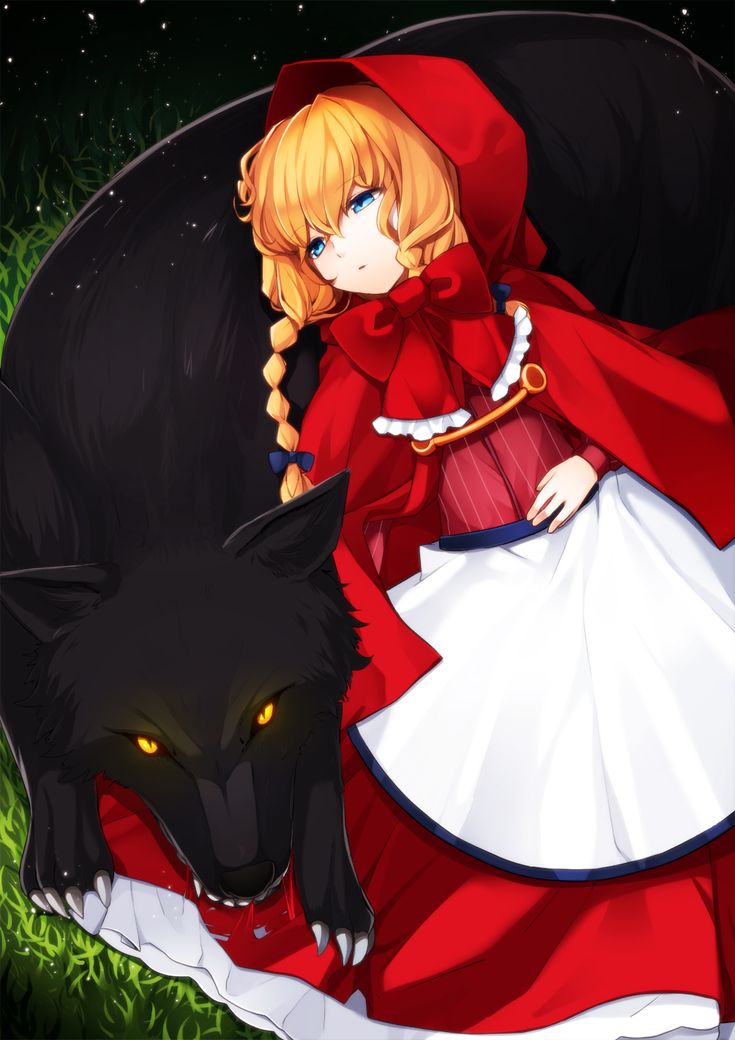 90
90
Masha and the Bear
Playing Through The Seasons
$39.90
Best-seller
Best-sellerMasha and the Bear
Surprise For Bear
$39.90
Best-seller
Best-sellerOn A Journey Among Dinosaurs
Perfect for dinosaur lovers!
$39.90
Best-seller
Best-sellerThe Tale of the Three Little Pigs
Personalized version of the classic!
$39.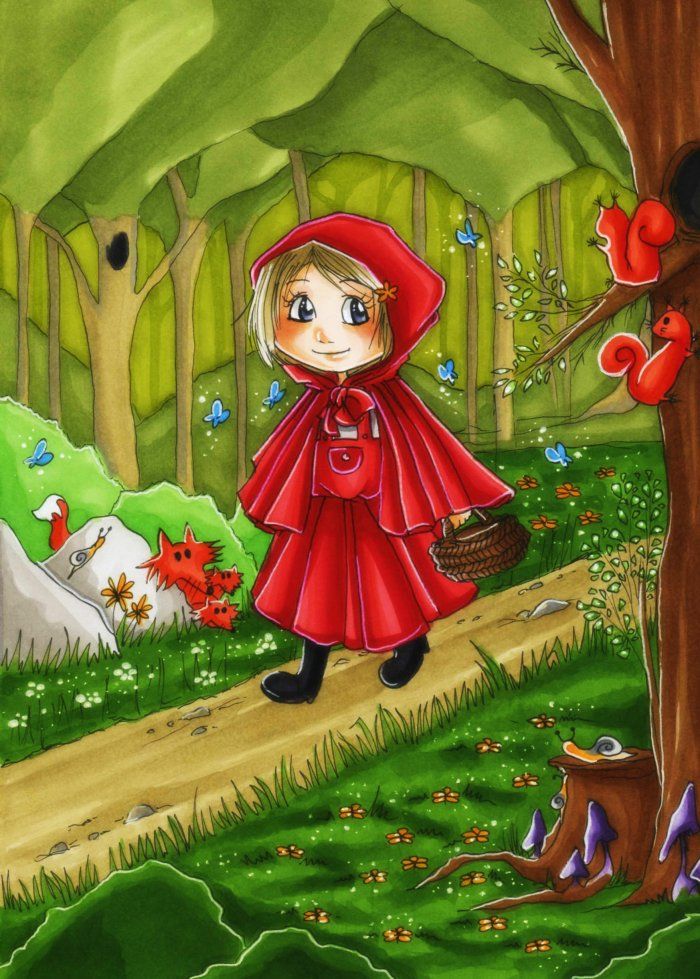 90
90
Masha and the Bear
Playing Through The Seasons
$39.90
Best-seller
Best-sellerMasha and the Bear
Surprise For Bear
$39.90
Best-seller
Best-sellerOn A Journey Among Dinosaurs
Perfect for dinosaur lovers!
$39.90
Best-seller
The Tale of the Three Little Pigs
Personalized version of the classic!
$39.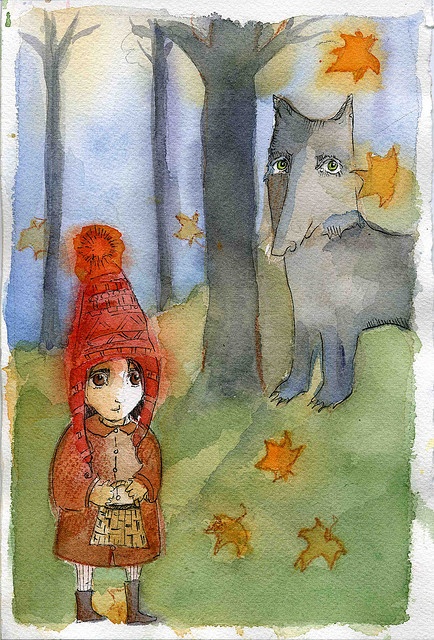 90
90
Masha and the Bear
Playing Through The Seasons
$39.90
Best-seller
Masha and the Bear
Surprise For Bear
$39.90
Best-seller
On A Journey Among Dinosaurs
Perfect for dinosaur lovers!
$39.90
Little Red Riding Hood
This story is featured in Favorite Fairy Tales and Short Stories for Children.
You may want to compare it to The Brothers Grimm version, Little Red-Cap.
Once upon a time there was a dear little girl who was loved by every one who looked at her, but most of all by her grandmother, and there was nothing that she would not have given to the child.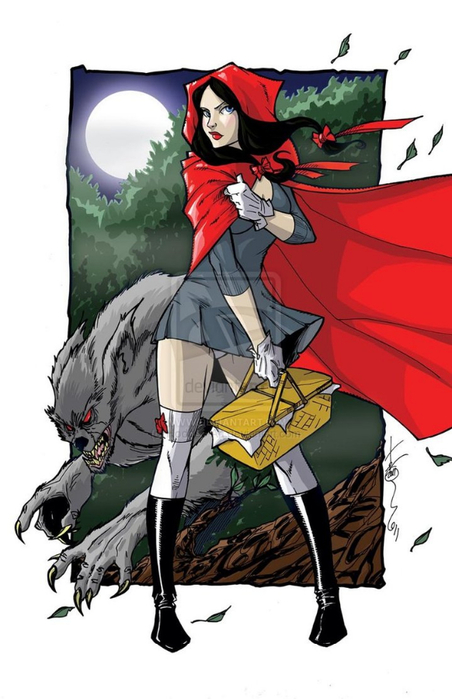 Once she gave her a little cap of red velvet, which suited her so well that she would never wear anything else. So she was always called Little Red Riding Hood.
Once she gave her a little cap of red velvet, which suited her so well that she would never wear anything else. So she was always called Little Red Riding Hood.
One day her mother said to her, "Come, Little Red Riding Hood, here is a piece of cake and a bottle of wine. Take them to your grandmother, she is ill and weak, and they will do her good. Set out before it gets hot, and when you are going, walk nicely and quietly and do not run off the path, or you may fall and break the bottle, and then your grandmother will get nothing. And when you go into her room, don't forget to say, good-morning, and don't peep into every corner before you do it."
I will take great care, said Little Red Riding Hood to her mother, and gave her hand on it.
The grandmother lived out in the wood, half a league from the village, and just as Little Red Riding Hood entered the wood, a wolf met her. Little Red Riding Hood did not know what a wicked creature he was, and was not at all afraid of him.
"Good-day, Little Red Riding Hood," said he.
"Thank you kindly, wolf."
"Whither away so early, Little Red Riding Hood?"
"To my grandmother's."
"What have you got in your apron?"
"Cake and wine. Yesterday was baking-day, so poor sick grandmother is to have something good, to make her stronger."
"Where does your grandmother live, Little Red Riding Hood?"
"A good quarter of a league farther on in the wood. Her house stands under the three large oak-trees, the nut-trees are just below. You surely must know it," replied Little Red Riding Hood.
The wolf thought to himself, "What a tender young creature. What a nice plump mouthful, she will be better to eat than the old woman. I must act craftily, so as to catch both." So he walked for a short time by the side of Little Red Riding Hood, and then he said, "see Little Red Riding Hood, how pretty the flowers are about here. Why do you not look round. I believe, too, that you do not hear how sweetly the little birds are singing.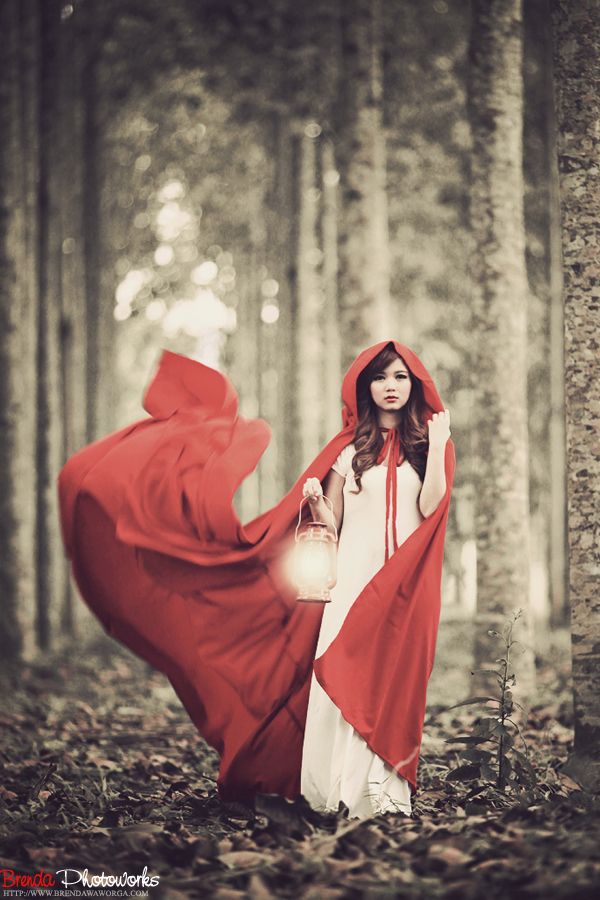 You walk gravely along as if you were going to school, while everything else out here in the wood is merry."
You walk gravely along as if you were going to school, while everything else out here in the wood is merry."
Little Red Riding Hood raised her eyes, and when she saw the sunbeams dancing here and there through the trees, and pretty flowers growing everywhere, she thought, suppose I take grandmother a fresh nosegay. That would please her too. It is so early in the day that I shall still get there in good time. And so she ran from the path into the wood to look for flowers. And whenever she had picked one, she fancied that she saw a still prettier one farther on, and ran after it, and so got deeper and deeper into the wood.
Meanwhile the wolf ran straight to the grandmother's house and knocked at the door.
"Who is there?"
"Little Red Riding Hood," replied the wolf. "She is bringing cake and wine. Open the door."
"Lift the latch," called out the grandmother, "I am too weak, and cannot get up."
The wolf lifted the latch, the door sprang open, and without saying a word he went straight to the grandmother's bed, and devoured her.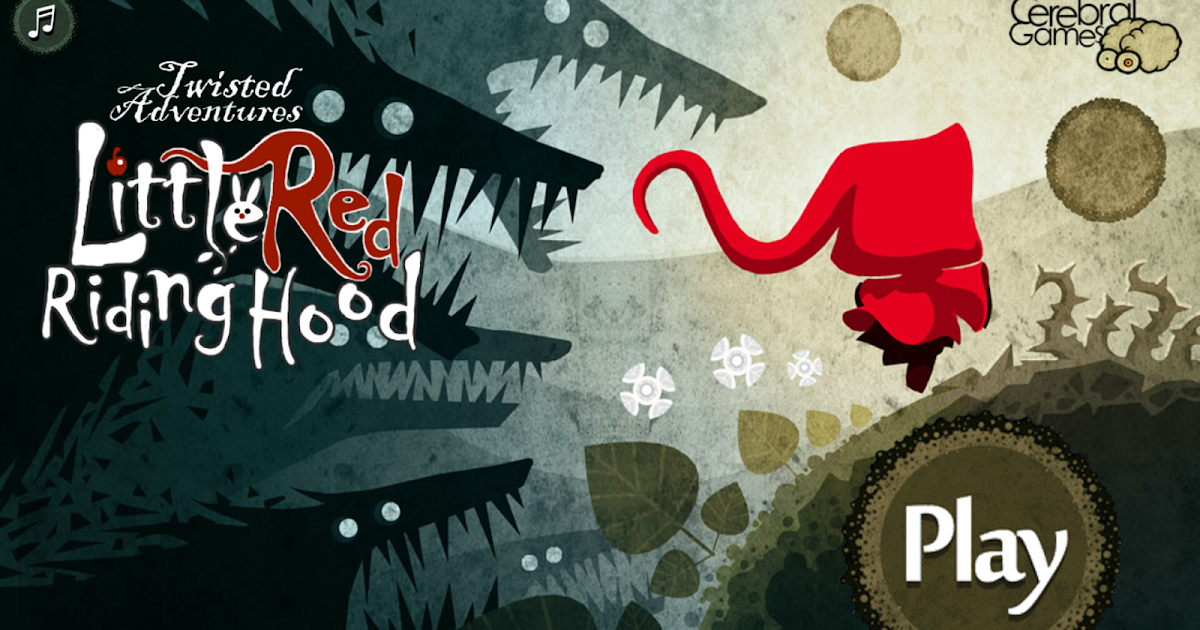 Then he put on her clothes, dressed himself in her cap, laid himself in bed and drew the curtains.
Then he put on her clothes, dressed himself in her cap, laid himself in bed and drew the curtains.
Little Red Riding Hood, however, had been running about picking flowers, and when she had gathered so many that she could carry no more, she remembered her grandmother, and set out on the way to her.
She was surprised to find the cottage-door standing open, and when she went into the room, she had such a strange feeling that she said to herself, oh dear, how uneasy I feel to-day, and at other times I like being with grandmother so much.
She called out, "Good morning," but received no answer. So she went to the bed and drew back the curtains. There lay her grandmother with her cap pulled far over her face, and looking very strange.
"Oh, grandmother," she said, "what big ears you have."
"The better to hear you with, my child," was the reply.
"But, grandmother, what big eyes you have," she said.
"The better to see you with, my dear."
"But, grandmother, what large hands you have. "
"
"The better to hug you with."
"Oh, but, grandmother, what a terrible big mouth you have."
"The better to eat you with."
And scarcely had the wolf said this, than with one bound he was out of bed and swallowed up Little Red Riding Hood.
When the wolf had appeased his appetite, he lay down again in the bed, fell asleep and began to snore very loud. The huntsman was just passing the house, and thought to himself, how the old woman is snoring. I must just see if she wants anything.
So he went into the room, and when he came to the bed, he saw that the wolf was lying in it. "Do I find you here, you old sinner," said he. "I have long sought you."
Then just as he was going to fire at him, it occurred to him that the wolf might have devoured the grandmother, and that she might still be saved, so he did not fire, but took a pair of scissors, and began to cut open the stomach of the sleeping wolf.
When he had made two snips, he saw the Little Red Riding Hood shining, and then he made two snips more, and the little girl sprang out, crying, "Ah, how frightened I have been.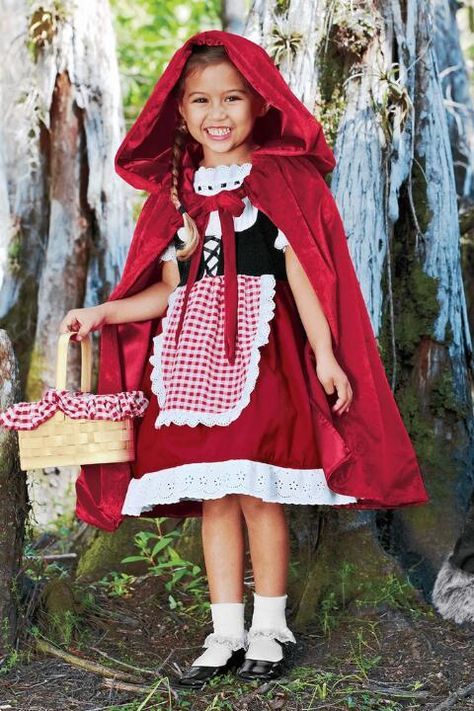 How dark it was inside the wolf."
How dark it was inside the wolf."
And after that the aged grandmother came out alive also, but scarcely able to breathe. Little Red Riding Hood, however, quickly fetched great stones with which they filled the wolf's belly, and when he awoke, he wanted to run away, but the stones were so heavy that he collapsed at once, and fell dead.
Then all three were delighted. The huntsman drew off the wolf's skin and went home with it. The grandmother ate the cake and drank the wine which Little Red Riding Hood had brought, and revived, but Little Red Riding Hood thought to herself, as long as I live, I will never by myself leave the path, to run into the wood, when my mother has forbidden me to do so.
It is also related that once when Little Red Riding Hood was again taking cakes to the old grandmother, another wolf spoke to her, and tried to entice her from the path. Little Red Riding Hood, however, was on her guard, and went straight forward on her way, and told her grandmother that she had met the wolf, and that he had said good-morning to her, but with such a wicked look in his eyes, that if they had not been on the public road she was certain he would have eaten her up.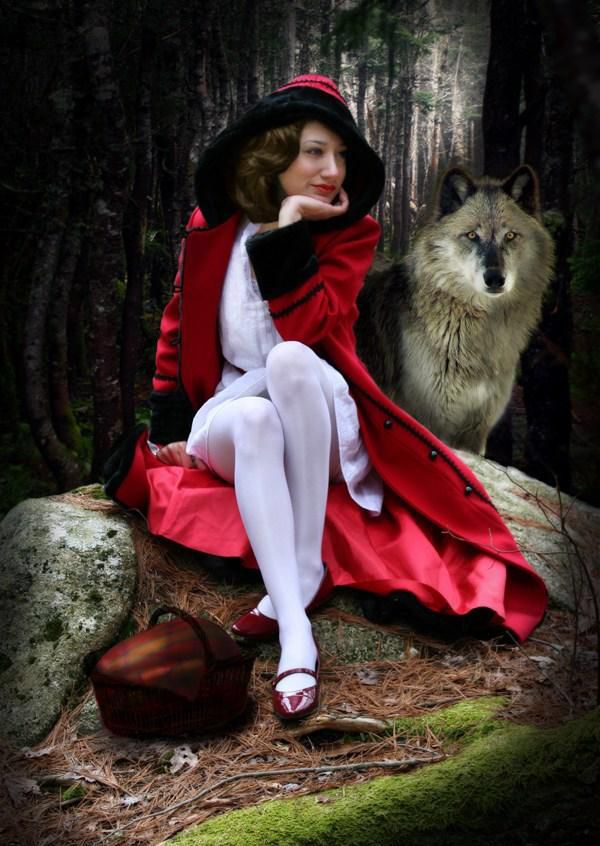 "Well," said the grandmother, "we will shut the door, that he may not come in."
"Well," said the grandmother, "we will shut the door, that he may not come in."
Soon afterwards the wolf knocked, and cried, "open the door, grandmother, I am Little Red Riding Hood, and am bringing you some cakes."
But they did not speak, or open the door, so the grey-beard stole twice or thrice round the house, and at last jumped on the roof, intending to wait until Little Red Riding Hood went home in the evening, and then to steal after her and devour her in the darkness. But the grandmother saw what was in his thoughts. In front of the house was a great stone trough, so she said to the child, take the pail, Little Red Riding Hood. I made some sausages yesterday, so carry the water in which I boiled them to the trough. Little Red Riding Hood carried until the great trough was quite full. Then the smell of the sausages reached the wolf, and he sniffed and peeped down, and at last stretched out his neck so far that he could no longer keep his footing and began to slip, and slipped down from the roof straight into the great trough, and was drowned.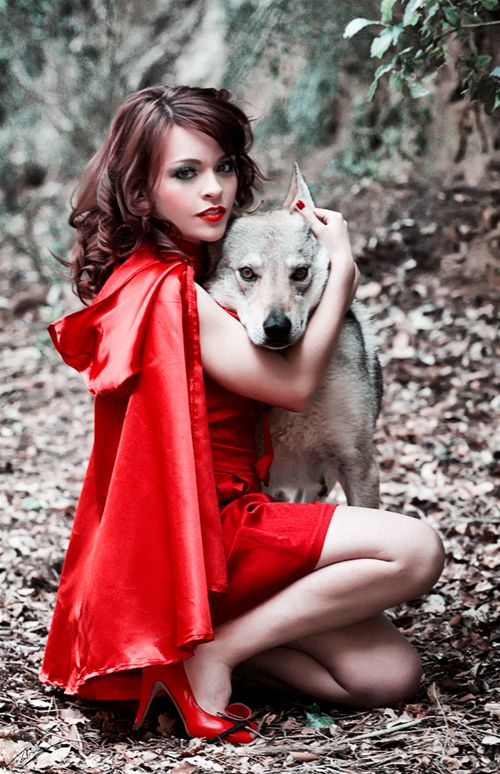 But Little Red Riding Hood went joyously home, and no one ever did anything to harm her again.
But Little Red Riding Hood went joyously home, and no one ever did anything to harm her again.
You may enjoy reading a "fractured fairy tale" version of this story in rhyme, How Little Red Riding Hood Came to Be Eaten, and our collection of Favorite Fairy Tales.
Red fish - 7 most popular species
Red fish belongs to the sturgeon family. The people also consider the salmon family to be such a fish because of the red color of their meat. Each subspecies of red fish has its own distinctive features: from appearance to useful qualities. However, what they have in common is the single name of the red fish. For a long time, this fish on the table has been considered a delicacy. It differs from other food products not only in its excellent taste, but also in its usefulness. And by using it regularly, you can improve your health, and therefore increase the protective functions of the body. In nature, these fish are rare, many are listed as endangered in the Red Book, and a ban has been imposed on their catch.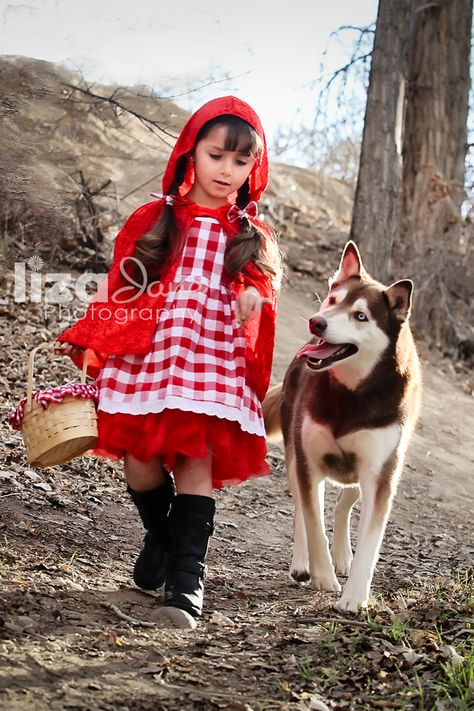 Therefore, many entrepreneurs are engaged in their cultivation and breeding. Meat of a valuable product is in great demand among all culinary specialists of the world, using numerous recipes from the simplest to the exclusive.
Therefore, many entrepreneurs are engaged in their cultivation and breeding. Meat of a valuable product is in great demand among all culinary specialists of the world, using numerous recipes from the simplest to the exclusive.
Red fish is certainly a popular Russian product, but few people know what species it belongs to, about the substances contained in meat, the benefits and contraindications. In addition, a wide variety of amazing dishes prepared with it. What you are interested in learning about this excellent fish, for example, eating it regularly, you should not be afraid of sunburn. And salmon species are not at all considered red by scientists
Types of red fish
There are many types of red fish. In addition to being divided into two families, each subspecies may also have differences.
Red fish includes families:
- sturgeons : stellate sturgeon, beluga, bester, sturgeon, spike, sterlet, etc.;
- salmon : salmon, pink salmon, sockeye salmon, whitefish, chum salmon, chinook, salmon, trout, etc.
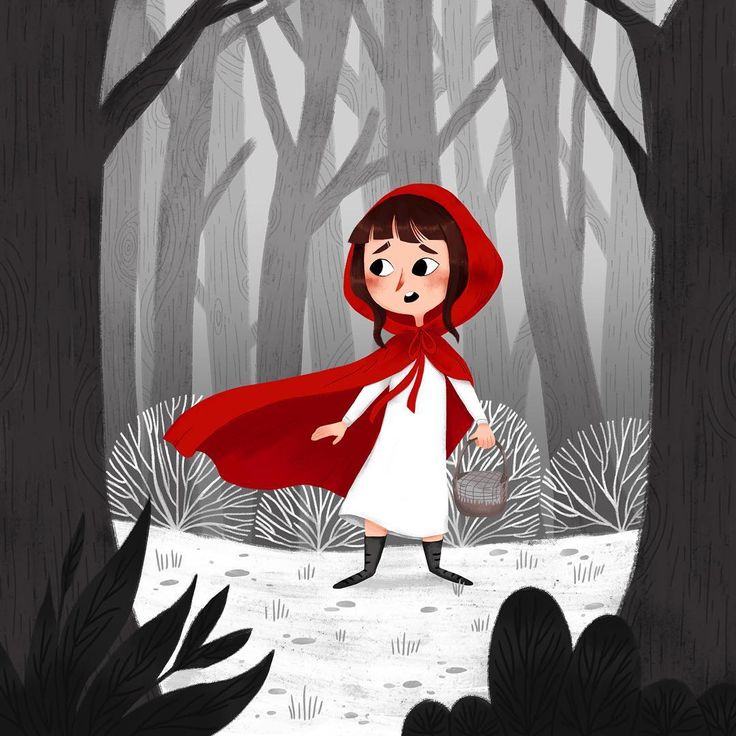 - with red meat; white salmon, nelma, coho, etc. - with white or pink meat.
- with red meat; white salmon, nelma, coho, etc. - with white or pink meat.
Some experts are against such a division, believing that salmon should not be classified as red. However, most use this classification.
Sturgeon family
Sturgeon is a common name for 27 species of fish. Their evolution refers to the Triassic period of approximately 245-208 ml. years ago. The oldest family of large fish inhabit fresh waters. Sturgeons mainly live in rivers, as well as the Black, Azov and Caspian Seas. They differ in an elongated body shape with five longitudinal bone shields. Many of them spend most of their lives at the bottom, feeding on small underwater inhabitants: fry, invertebrates, worms, crustaceans, molluscs, caviar of other fish. They are considered centenarians, and they have a rare spawning event every two or three years.
Black caviar and the unique taste of meat - that's what gave this fish a special value. Due to their exquisite taste and useful qualities, sturgeons are not cheap on the market. In addition, it is very difficult today to find a real natural product. The number of sturgeons has significantly decreased over the past decades. They are listed in the Red Book as endangered and protected by the state. Sturgeons are often farmed for commercial purposes, as well as to increase the number of endangered populations in natural conditions.
In addition, it is very difficult today to find a real natural product. The number of sturgeons has significantly decreased over the past decades. They are listed in the Red Book as endangered and protected by the state. Sturgeons are often farmed for commercial purposes, as well as to increase the number of endangered populations in natural conditions.
Sturgeon
Most of the sturgeons inhabit the Russian rivers, including Siberia, the Caspian Sea basin and in the east to Lake Baikal. The sturgeon can grow up to 8 meters long and weigh 3.2 tons. Those that are found in fresh waters do not reach large sizes. Sturgeon meat and caviar are less valuable than other, not so large species. Sturgeon spawns in rivers, staying there until spring. At this time, the fish significantly gaining body weight.
Sterlet
Sterlet is the smallest species of sturgeon. Found in the Upper Danube, Ob, Lena, Yenisei, without the need to migrate to the sea. And also in Ladoga and Onega lakes and others. The fish can reach 15 kg, 1.3 meters long. The life expectancy of a sterlet is 30 years. The hybrid of this species with the beluga is called bester. In spring, the sterlet spawns in the upper reaches of the rivers.
The fish can reach 15 kg, 1.3 meters long. The life expectancy of a sterlet is 30 years. The hybrid of this species with the beluga is called bester. In spring, the sterlet spawns in the upper reaches of the rivers.
Stellate sturgeon
In addition to the Black, Azov and Caspian seas, stellate sturgeon also lives in the Adriatic and Aegean. She has a long, thin and straight muzzle. In length, it reaches about 2.5 m, with a weight of up to 80 kg. Sevruga can live up to 30 years. Its coloration is dark grayish-green or brown, with a light belly. Stellate sturgeon, like all sturgeons, lies at the bottom during the day, and often feeds at night. To spawn, the fish goes up the river to shallow water.
Salmonids
Salmonids are the oldest inhabitants of fresh and salt water bodies in the northern hemisphere, in the Atlantic and Pacific oceans. Russia is famous for its Far Eastern sturgeons, which can also be found in the Baltic Sea.
It is customary to distinguish three subspecies of the salmon family:
- salmon;
- whitefish;
- grayling.
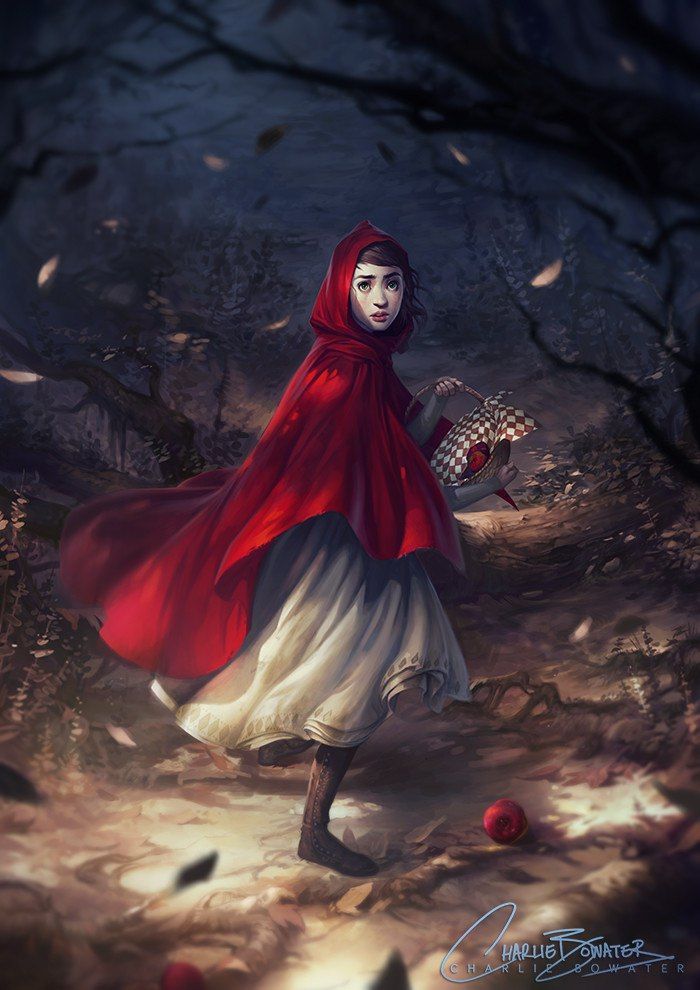
The largest of them, from 2-2.5 meters long and tens of kilograms, are whitefish. Most salmon live for 10 years, some are able to reach 50 years of age. They have distinctive external characteristics: compressed sides with round scales and fins in the middle of the belly. And their skeleton does not have many bones.
Salmon caviar red. Spawning in this family happens once, where they were born. And after spawning, as a rule, they die. The body color of salmonids changes during this period, as well as in environmental conditions. Salmon feed on caviar of other fish, insect larvae, mollusks and crustaceans.
Trout
Trout lives both in freshwater and in the sea. In Russia, it is found in Onega and Ladoga lakes, Karelia, the White Sea and Baltic basins. Sea trout spawn in fresh water from autumn to spring. The bright external coloration makes the trout recognizable, and because of the numerous dark spots, it was nicknamed the "pied fish".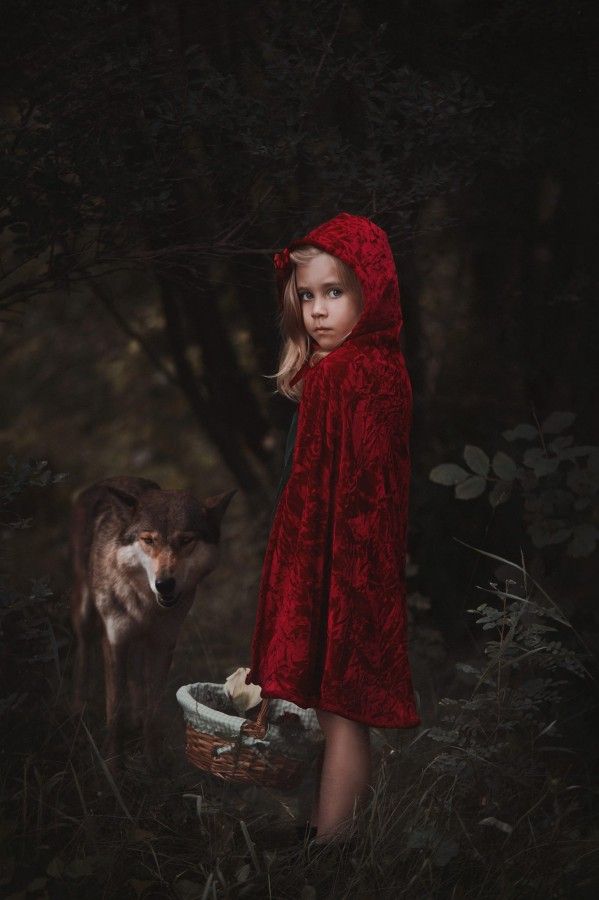 Trout is an oily fish, which is more healthful because it contains more fat-based nutrients. It has excellent tasting meat and is often bred artificially.
Trout is an oily fish, which is more healthful because it contains more fat-based nutrients. It has excellent tasting meat and is often bred artificially.
Salmon
Salmon is a favorite fish in Ancient Russia. You can often hear another name - noble, Atlantic, or lake salmon. Its habitat includes lakes: Ladoga and Onega, the White Sea basin. When salmon spawns in rivers, its meat gradually loses its red color, and with it the nutritional value.
Salmon body color is silvery, with dark spots on the upper part. When spawning, reddish spots appear on the body. With a maximum weight of 20 kilograms, salmon can reach 1.5 meters in length. Salmon is a valuable breed in the salmon family due to the rich composition of micro and macro elements in meat.
Pink salmon
Pink salmon inhabits the waters of the Pacific Ocean and the Atlantic. When spawning, pink salmon is found in Siberian rivers and on the North American mainland. Its length reaches 70 cm, with a weight of about 3 kilograms.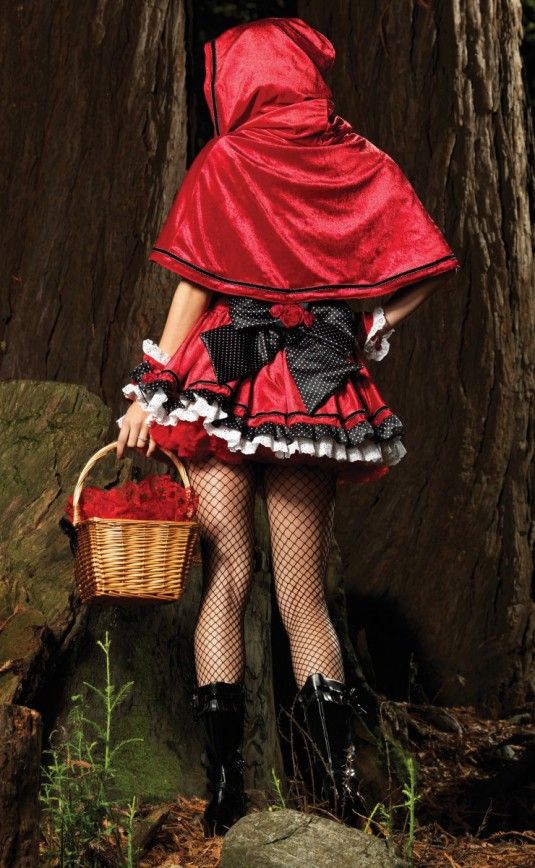 At the age of 2-3 years, pink salmon spawns, usually it falls at the beginning of autumn.
At the age of 2-3 years, pink salmon spawns, usually it falls at the beginning of autumn.
The main external differences of the fish: silver body color with small scales, dark spots on the tail and on the upper body. During the spawning period, the fish undergoes external changes: in females, the body color becomes black, and in males, teeth and a hump grow. Pink salmon caviar is quite large - about half a centimeter.
Whitefish
Whitefish is not the most common representative of salmon, inhabiting salt and fresh water bodies. The habitat of whitefish is the northern latitudes of the Pacific Ocean, but fish spawn in rivers. Whitefish live on average for about 10 years and very rarely its age reaches 20 years, with a body length of about 1.5 meters. The silver color of the whitefish has dark fins. Fish meat is white.
Nutritional value of red fish
Red fish is rich in protein. So for 100 gr. product: 21 gr. proteins, 13 gr. fats, 1 gr. carbohydrates. And has 205 kcal. Depending on the type of fish, these indicators change to a greater or lesser extent, as well as the composition. For example, salmon differs from salmon in a large amount of proteins and fats.
carbohydrates. And has 205 kcal. Depending on the type of fish, these indicators change to a greater or lesser extent, as well as the composition. For example, salmon differs from salmon in a large amount of proteins and fats.
Composition and benefits of red fish
The health benefits of red fish are very high. It is rich in proteins - a building material for cells and tissues. Its difference from other types of fish in the diverse composition of useful substances, vitamins and minerals.
Main ingredients in red fish:
- fats and fatty acids: omega-3;
- micro and macro elements: potassium, calcium, magnesium, sodium, phosphorus, selenium, iron, iodine, fluorine, etc.;
- amino acids: arginine, valine, leucine, tryptophan, etc.;
- B vitamins: thiamine, riboflavin;
- vitamins: C, E, PP, A, D.
Omega-3 normalizes cholesterol, strengthens blood vessels, which affects the excellent activity of the brain. Omega-3 improves memory, so fish is especially advised to be added to the diet of children and schoolchildren. Increases performance. Reduces the chances of oncological diseases, hypertension. Extractives will help improve the digestion process. Methionine protects the liver from toxins, prevents diabetes. Iodine is important for the prevention and control of thyroid diseases.
Omega-3 improves memory, so fish is especially advised to be added to the diet of children and schoolchildren. Increases performance. Reduces the chances of oncological diseases, hypertension. Extractives will help improve the digestion process. Methionine protects the liver from toxins, prevents diabetes. Iodine is important for the prevention and control of thyroid diseases.
Vitamin D improves immunity and strengthens the nervous system. And also help to cope with insomnia, contributing to the normalization of healthy sleep. Strengthens bones, which is also important for the prevention of rickets. Thanks to vitamin D, calcium becomes easily digestible, which is also important for osteoporosis, a disease that affects women during menopause. Folic acid is important in the prevention of anemia and also has a beneficial effect on the skin. Active fats will help you always stay "in shape", without a hint of extra pounds. Vitamins B, A, E, D promote strong immunity.
It has been proven that regular consumption of red fish:
- improves metabolism and blood circulation in the body;
- normalizes the functioning of the liver, gastrointestinal tract, cardiovascular system;
- strengthens the arteries;
- restores the nervous system;
- contributes to the prevention of thrombophlebitis;
- slows down the aging process;
- helps to cope with depressive and stressful conditions;
- reduces the risk of age-related macular degeneration leading to vision loss and atherosclerosis;
- relieves shortness of breath and anemia;
- increases cell regeneration;
- reduces the appearance of inflammatory processes;
- improves the condition of the skin, nails, hair, teeth;
- strengthens bones.
By regularly eating red fish, you can replenish the supply of missing substances in the body and maintain them, which means you can always be healthy, beautiful and cheerful.
Harm and contraindications
Do not forget that, like many other food products, salmon and sturgeon have their own list that limits their consumption.
Contraindications for use include:
- seafood allergy;
- pregnancy and lactation;
- gastric ulcer.
An excess of red fish in the diet can lead to edema.
The quality, and hence the usefulness, directly depends on the habitat of the fish, its nutrition and age. So, if the fish was caught in polluted waters, then it will definitely contain salts of heavy metals, up to radioactive ones, causing irreparable damage to health. It should be remembered that the older the fish, the more it has absorbed from the environment. You should also be wary of low-quality artificially bred fish, when unscrupulous producers use antibiotics, hormones and other chemicals that can be harmful to health when growing it.
This does not apply to fish in the Akulovka farm. Our trout and whitefish are grown on high-quality natural feed that meets all standards. Regular tests and analyzes, as well as certificates, confirm the high quality of shark fish. Feedback from our grateful customers is also an indicator of a healthy and fresh product. Nutritionists and Akulovka are calling for the regular consumption of red fish, as this product is low in calories and high in protein, and its significant benefits are important for everyone.
Recipes with red fish
Appetizing red fish in millions of recipes reflects its popularity among culinary experts around the world. Starting with how beautifully cut it on the festive table. Finishing with masterpieces of culinary fish art from world chefs. In fact, this fish cooks very quickly, and the main secret in the recipe is the compositional taste, which directly depends on the selected ingredients and the cooking method.
The product can be salted or smoked even at home. Many prefer it in lightly salted or smoked form, when all useful substances are preserved in it. Using the grill or baking in the oven with foil, "sleeve" is the most popular and common cooking option, avoiding pan frying. Sandwiches, pizza, pies, salads, rolls and sushi, fish soup, rolls, juicy steaks. It can be combined with mushrooms, vegetables and herbs, cheese, wine and other prescription ingredients in cooking. It is customary to serve rice or potatoes as a side dish for baked red fish.
Sterlet with white wine
Ingredients:
1 sterlet, cleaned;
1 lemon;
dill;
salt;
pepper;
white wine.
Preparation:
- Rinse the fish well with cold water.
- Combine peeled and thinly sliced lemon with dill, salt and pepper and pour over the fish.
- Top with white wine and bake in preheated oven for 25 minutes (180°C).
- Remove the spine.
Serve with rice or boiled potatoes.
Baked Salmon with Garlic Butter
Delicate Garlic Butter Baked Salmon with Crispy Fried Potatoes and Asparagus on a Tray, perfect for a light dinner.
Ingredients:
1 salmon;
a few cloves of garlic;
300 gr. asparagus or broccoli;
100 gr. butter or olive;
4-5 pcs. potatoes;
1 lemon;
salt, pepper.
Preparation:
- After chopping potatoes into wedges or fingers, bake them as fish need less time in the oven.
- Peel the garlic cloves and pass through a garlic press.
- Combine garlic, salt, spices, lemon juice and melted butter and pour over fish and asparagus.
- Bake for 8-10 minutes in a preheated oven at 200°C.
A chilled glass of white wine will harmoniously complement the taste of the dish.
Sturgeon in the oven
Ingredients:
4 sturgeon medallions, fresh fillet;
1 bunch fresh parsley and rosemary;
sea salt;
black pepper;
1 lemon;
olive oil.
Preparation:
- Line a baking sheet with foil and heat to 200°C.
- Brush both sides of the medallions with olive oil and sprinkle with fresh herbs, sea salt, pepper and the juice of half a lemon.

- Leave some parsley for garnish.
- Brush grill foil with olive oil and arrange medallions. Fry for about 5 minutes on each side.
Put the prepared sturgeon medallions on a plate, sprinkle with fresh parsley and squeeze the juice of the remaining half of the lemon.
Bon appetit!
Red fish is a beautiful fish
This is how our ancestors thought, because red has been associated with beauty since ancient times: a red girl, a red corner in a house, a red sun. Red fish from the salmon or sturgeon family is a storehouse of protein, vitamin D, omega-3, calcium, iodine and other essential substances for excellent health and longevity.
But at the same time, you should be careful when choosing and buying this product, and also if you have an allergy to seafood. Not only beautiful, but also natural, which means full of all useful vitamins, the fish can be ordered right now in the Akulovka online store with door-to-door delivery in St. Petersburg and Moscow. To enjoy now its excellent soft and delicious meat, for the benefit of health and general well-being!
Petersburg and Moscow. To enjoy now its excellent soft and delicious meat, for the benefit of health and general well-being!
species with names, descriptions and photos
Salmonidae family
The salmon family is represented by three subfamilies: salmon proper, whitefish and grayling.
Description and features
The size of salmon varies greatly from a few centimeters in length and tens of grams of weight to two meters in length and weight up to 60 kilograms. Some whitefish have the smallest size, the largest representatives are salmon, chinook and taimen. All members of the family have a laterally compressed body covered with dense, medium-sized scales.
A characteristic difference is the presence of the so-called adipose fin between the dorsal and caudal fins. Salmonids are predators; small fish, caviar, crustaceans, insects and their larvae, and even mammals and birds (lenok, taimen) predominate in the diet.
Habitats
All members of the family live in the Northern Hemisphere.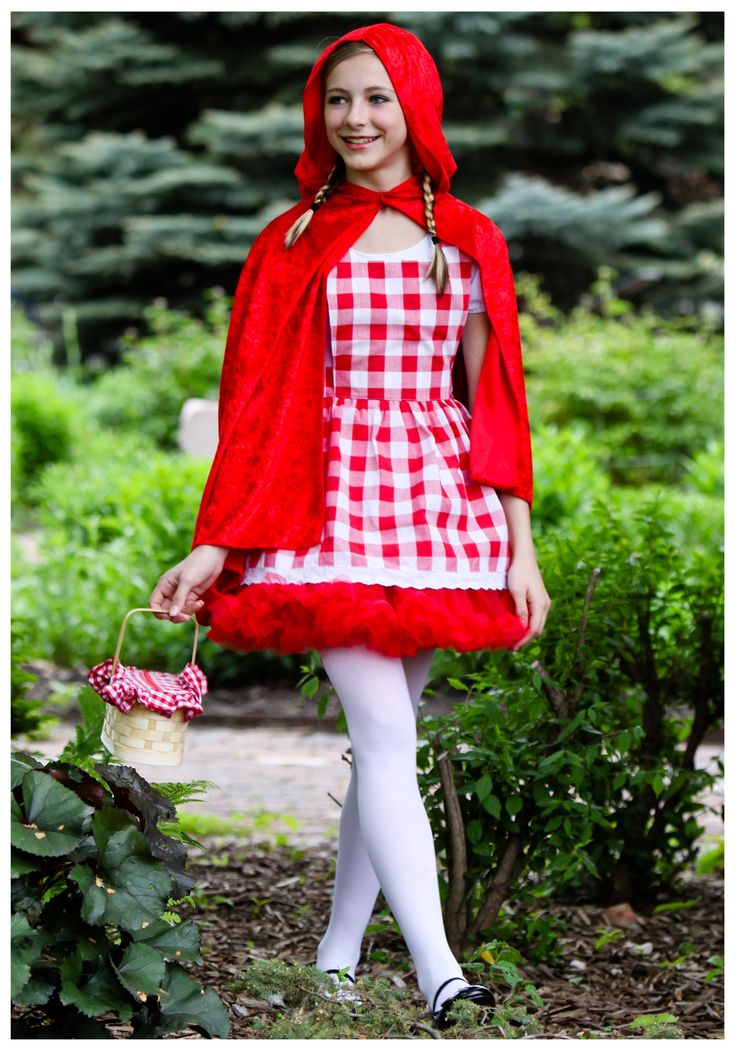 They are found both in freshwater reservoirs and in the Pacific and Atlantic oceans. Very sensitive to the quality and temperature of water, the presence of oxygen.
They are found both in freshwater reservoirs and in the Pacific and Atlantic oceans. Very sensitive to the quality and temperature of water, the presence of oxygen.
Spawning and reproduction
Salmonidae are characterized by the fact that they spawn exclusively in fresh water. Although they can spend their entire adult life in the salty waters of the seas and oceans. Sexually mature individuals during the spawning period enter rivers and streams flowing into the seas and oceans. At this time, the color of the fish and the general appearance change significantly. This is especially noticeable in Pacific salmon. Representatives of many species die after spawning.
Salmon
One of the largest salmon, weighs up to 45 kg. Refers to Atlantic salmon. Forms lacustrine forms in a number of reservoirs of Northern Europe in Russia, Sweden, Norway and Finland. Anadromous form spawns in the rivers of Europe and North America. One of the valuable objects of aquaculture.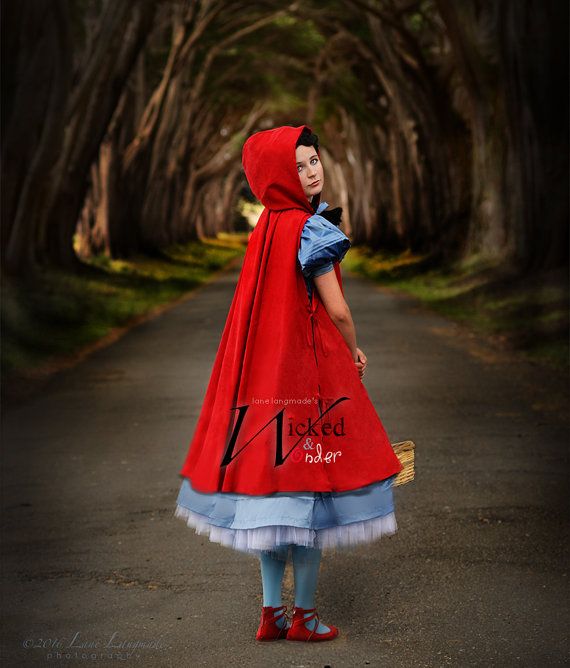
Appearance is considered "classic" for fish of this family - a strong body with powerful fins, silvery color. Spawning takes place in autumn, the breeding stock does not die and is able to spawn several times in its life.
Salmon meat has a number of useful properties. For this reason, it is used in cooking, cosmetology and medicine. Fish is rich in trace elements, among which it is worth highlighting:
- Calcium.
- Magnesium.
- Iron.
- Fluorine.
- Sodium.
The energy value of salmon is low - only 130-150 kcal. This makes it an excellent dietary product. Its meat is very tender, so the fish does not lose its taste either fresh or frozen.
Whitefish
There are two subspecies - whitefish and nelma. The whitefish lives in the basin of the Caspian Sea, at present its number has greatly decreased. Nelma is found in rivers flowing into the Arctic Ocean. In appearance, the white salmon resembles a large whitefish. The general coloration is silvery, with a darker back. This is a large fish, reaching a weight of 15 kg. Nelma is larger, its weight reaches 40 kg.
The general coloration is silvery, with a darker back. This is a large fish, reaching a weight of 15 kg. Nelma is larger, its weight reaches 40 kg.
The meat of the fish in question is white, hence the name. It has quite a lot of fat. Therefore, lovers know that white salmon is a perishable product. It is not inferior to salmon in terms of the amount of vitamins and microelements. Among the useful substances it is worth highlighting:
- Vitamins: group B (especially B12), E, PP.
- Phosphorus, copper, calcium, zinc.
The calorie content of white salmon is almost 2 times lower than that of salmon - 88 kcal. Therefore, it is also an attractive product in dietetics. Fish has a unique taste. For clarity, it can be noted that its meat is eaten in almost any form. At the same time, it goes well with vegetables and mushrooms.
Chum salmon
Widespread Pacific salmon, weighing up to 15kg. In Eurasia, it occurs from the mouth of the Lena to Korea, in North America on the West Coast from California to Alaska.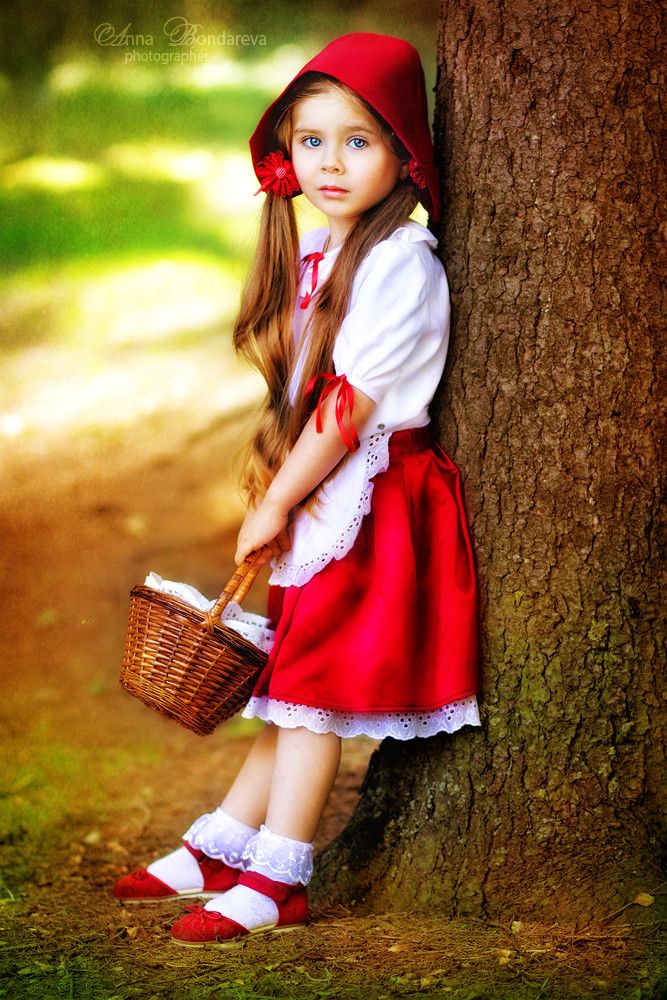 It spawns in late autumn, rising hundreds of kilometers upstream. It occupies one of the first places in commercial catches.
It spawns in late autumn, rising hundreds of kilometers upstream. It occupies one of the first places in commercial catches.
Keta, like many of its relatives, is full of elements that are beneficial for human health. Fish is rich in protein, so lovers of an active lifestyle add it to their diet. At the same time, the product does not contribute to weight gain, the calorie content is about 125 Kcal.
Among the trace elements in chum salmon stand out:
- Vitamin B12.
- Minerals - selenium, molybdenum, iron, fluorine.
The taste characteristics of the fish are compatible with many food products. Lovers use it both fried and salted with the addition of vegetables, herbs or spices.
Pink salmon
Got its name because of the characteristic appearance of males in breeding plumage, which develops a steep hump on the back. One of the smallest salmon, weight rarely exceeds 4-5 kg. Spawning is strongly extended from July to October. The range of pink salmon is extensive, it spawns from Lena to Korea, occupies the entire western coast of the USA and Canada, and is acclimatized in the Great Lakes.
The range of pink salmon is extensive, it spawns from Lena to Korea, occupies the entire western coast of the USA and Canada, and is acclimatized in the Great Lakes.
Introduced to the Kola Peninsula, pink salmon has taken root so well that a program to combat it has been adopted in Norway due to serious competition from salmon. It ranks first among all salmon in terms of commercial catches.
Another type of salmon, which is appreciated not only by gourmets, but also by doctors. A distinctive feature of pink salmon is the low fat content of its meat (compared to other varieties of red fish). However, its energy value is not inferior to salmon - also about 150 kcal.
Fish contributes to the following positive changes in the human body:
- Reduces the risk of cancer.
- Beneficial effect on the thyroid gland.
- Contributes to the normal functioning of the digestive tract.
When cooking pink salmon, you need to be aware that when frying, the meat becomes too dry. Therefore, it is better to process fish in a different way. It is also recommended to refrain from using spices.
Therefore, it is better to process fish in a different way. It is also recommended to refrain from using spices.
Coho salmon
Large Pacific salmon, weighing 13-15 kg. In the sea it has a monochromatic silver color. During spawning, it changes to red tones from pinkish to bright crimson. Spawning stretches from September to March. Like most salmon, after spawning, the breeding stock dies.
Coho salmon meat, like chum salmon, is a source of protein. Therefore, athletes should pay attention to this fish. Especially if you want to gain muscle mass faster. The calorie content of the product is comparable to pink salmon or salmon.
It is also necessary to note the beneficial effect of coho salmon on health. It manifests itself as follows:
- Hemoglobin level increase.
- Achievement of balance in the work of the nervous system.
- Normalization of metabolism.
Nature has rewarded coho salmon with great taste.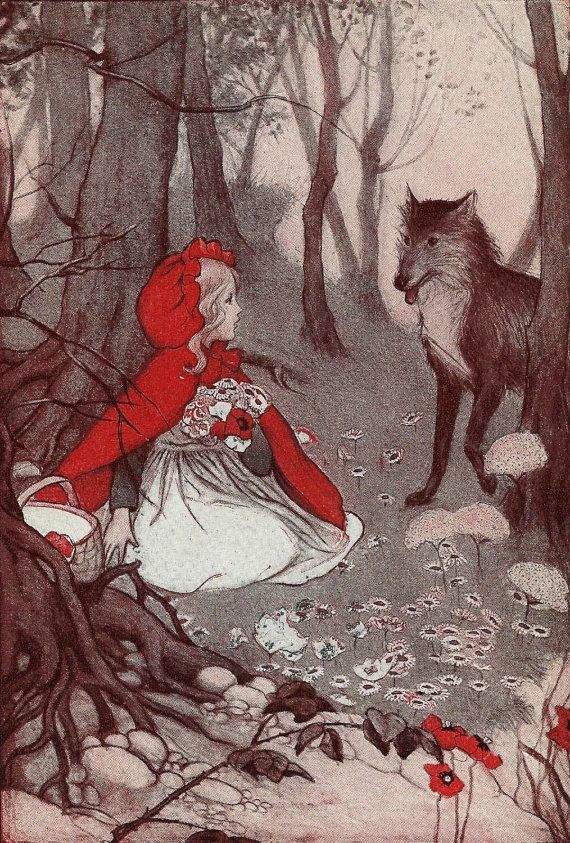 The meat of this fish is both juicy and tender. Therefore, it is used in cooking even more often than other counterparts.
The meat of this fish is both juicy and tender. Therefore, it is used in cooking even more often than other counterparts.
Sockeye salmon
In breeding attire, a characteristic difference is the bright red color of both males and females. Salmon is not large, the average weight of the fish is 2-3 kg, sometimes reaching 5 or even 7 kg. Spawning spring-summer, from May to July. It is found both on the western coast of North America and in Eurasia from Japan to Chukotka. It ranks third in terms of fishing volumes. The diet is dominated by crustaceans, which have a red pigment, due to which sockeye salmon meat acquires the brightest color among all salmon.
There are no carbohydrates in sockeye salmon meat. This is not its only feature. In some regions, fish is valued higher than other members of the family. The healing properties of the product are on top: it has a positive effect on the heart, on the skin, and on the internal systems of the body. However, sockeye salmon should not be consumed by people with stomach ulcers.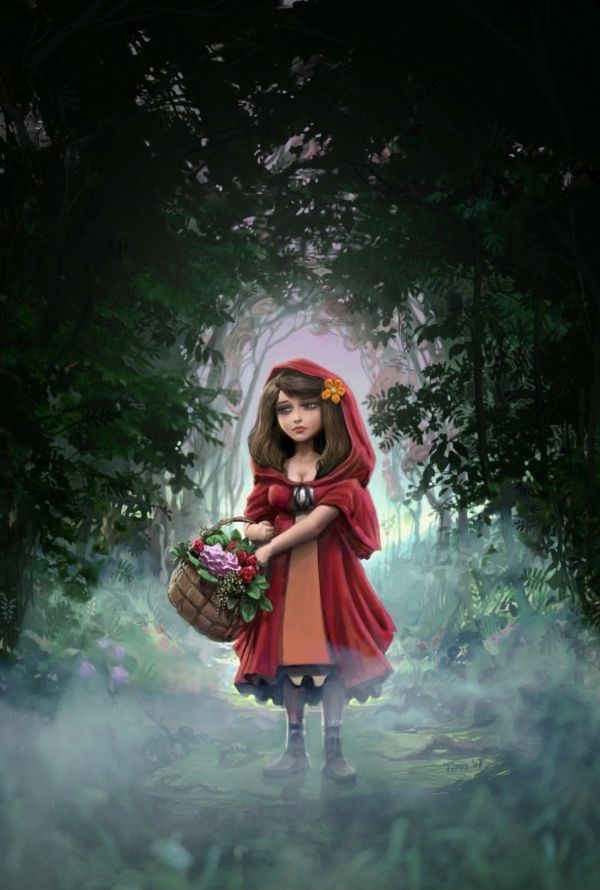
Fish has an original taste. This is due to the nutrition of the sockeye salmon itself. Basically, its diet includes crustaceans. Therefore, it seems to many that they do not eat sockeye salmon, but crab or crayfish. The best taste properties are achieved in smoked form.
Chinook salmon
The largest Pacific salmon, grows up to 60 kg with a length of up to 2 meters. The range extends from Japan to Kamchatka in Eurasia, from California to Alaska in North America. In Eurasia it spawns all summer from June to August, in the North American population in autumn and winter.
Speaking about chinook meat, first of all it is worth mentioning its color. The inside of the fish has marvelous shades of red. This is due to the nutrition of the species itself, like sockeye salmon. The chemical composition of chinook salmon is varied.
A long list of micronutrients expands the positive effects on the body of consumers. Chinook salmon can help with the following ailments:
- Depression.
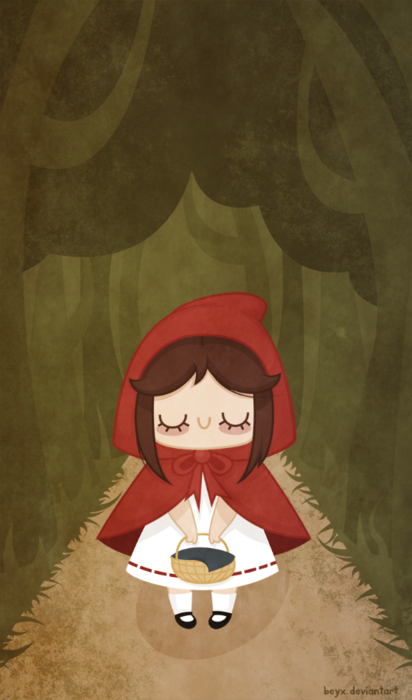
- Vision problems.
- Weak bones.
- Oncology.
Taste qualities of fish are similar to salmon, but have their own peculiarities. It is recommended to use small individuals, since larger ones can accumulate mercury in themselves.
Whitefish
There are several main subspecies of whitefish living in Russia: Siberian whitefish, Chudsky whitefish, Volkhov whitefish, whitefish, whitefish, Amur whitefish and several subspecies of vendace. However, there is no consensus on classification today. The sizes, depending on the subspecies, vary greatly: vendace have a length of up to 15-30 cm, muksun and whitefish reach a length of 80 cm and weigh up to 15 kg.
Most whitefish are resident species that spend their entire lives in fresh waters. However, there are also anadromous species (for example, the Siberian whitefish). Whitefish, unlike salmon, do not die after spawning. Most species spawn in autumn.
Sig is remarkable in that it has a large number of varieties. Because of this, the characteristics of meat and taste may differ in one direction or another. However, it should be said that all breeds contain three main vitamins:
Because of this, the characteristics of meat and taste may differ in one direction or another. However, it should be said that all breeds contain three main vitamins:
- A.
- D.
- PP.
Unlike many relatives, whitefish is a river fish. Perhaps that is why she has less bones in her meat. At the same time, it is tasty and juicy. Before processing, it must be remembered that this species does not withstand cooking and falls apart.
Grayling
The most famous are European and Siberian (with subspecies) grayling. It is considered one of the most beautiful species of salmon due to its luxurious dorsal fin and high variability in color, from almost black to silver, with the addition of various shades. Grayling lives only in fresh water, preferring fast currents and clean water with a high oxygen content.
Sometimes found in clear lakes with cold water. Reaches a weight of up to 5 kg, and the European grayling is larger than the Siberian. The diet is dominated by insects and their larvae, small fish and caviar. Grayling spawns in late spring - early summer, depending on climatic conditions. It does not make long migrations from its permanent habitats, sometimes entering smaller tributaries.
The diet is dominated by insects and their larvae, small fish and caviar. Grayling spawns in late spring - early summer, depending on climatic conditions. It does not make long migrations from its permanent habitats, sometimes entering smaller tributaries.
Fish is another valuable source of protein. Grayling is also recommended for people with cardiovascular diseases. It has the usual set of vitamins and microelements for salmon (E, A, PP, iron, fluorine).
Initially (when raw) the fish has a fatty layer and a not very pleasant smell. During cooking, the smell disappears. And the meat becomes juicy and soft. An additional advantage of grayling is the absence of bones.
Omul
The Arctic omul is a typical anadromous fish that feeds in the seas of the Arctic Ocean and enters the mainland rivers for spawning. Baikal omul, despite the similar name, is genetically closer to real whitefish and lives only in Baikal. The weight of the Arctic omul reaches 3 kg, the Baikal omul is sometimes found up to 7 kg, however, the average weight is 0.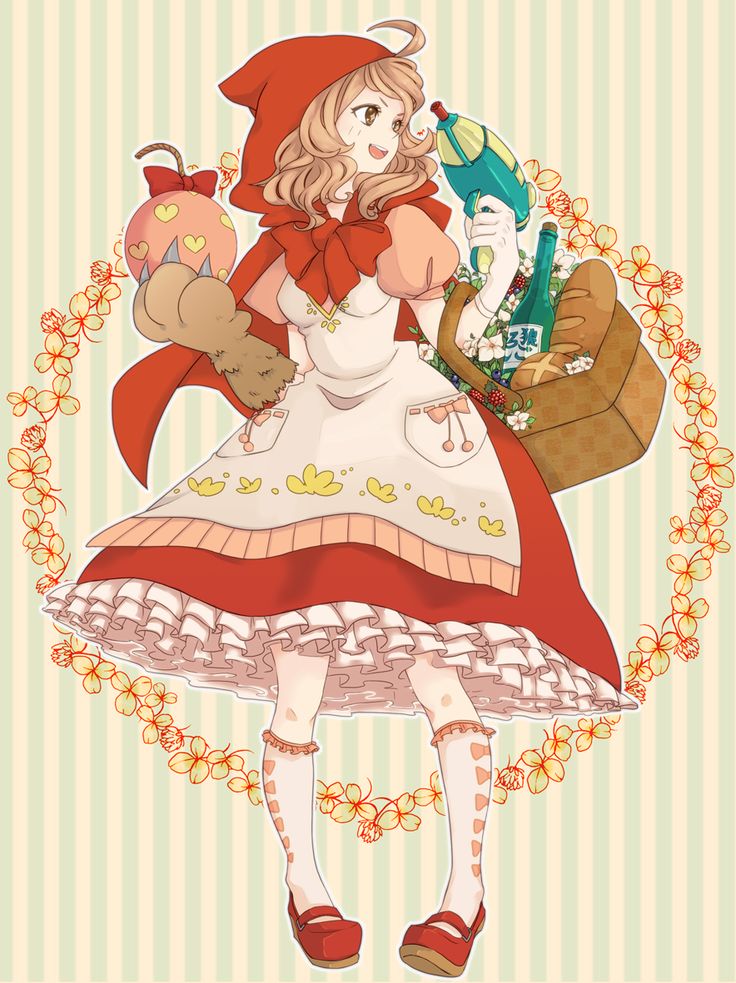 3-1.5 kg. Spawning takes place in autumn.
3-1.5 kg. Spawning takes place in autumn.
Arctic cisco, due to harsh habitat conditions and a long period of puberty, has time to spawn only 2-3 times in its life. The diet of omul is varied: crustaceans, juvenile fish, caviar, insects and their larvae.
Omul is one of the closest fellow whitefish. Therefore, in many respects it repeats a number of its remarkable properties. Fish meat is fatty. This is due to the fact that individuals need to survive in harsh conditions. But this does not affect the calorie content - less than 100 kcal per 100 g. In terms of healing effects on the body, the product helps as follows:
- Blocks the development of arthritis.
- Removes the influence of cardiovascular diseases.
- Relevant for depression.
Omul is not so capricious during heat treatment as whitefish. Therefore, fish connoisseurs cook it in almost any form.
Char
They form anadromous and residential lake-river forms.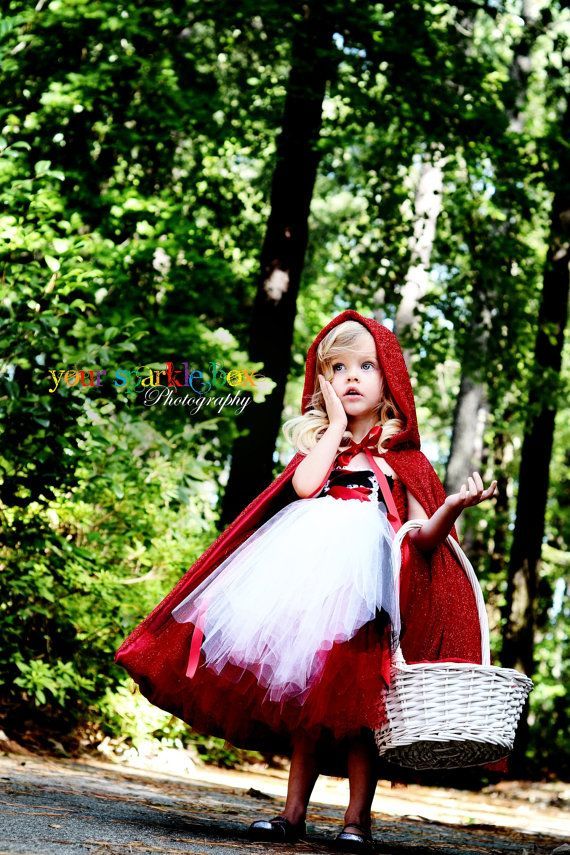 Anadromous chars are the largest, weighing up to 15 kg. Residential loaches are much smaller, only up to 1.5-3 kg. Anadromous char is a strong predator, eating everything it can handle. The diet of the resident form is dominated by insects and juveniles of other fish. Spawning takes place in two periods - in summer and autumn, until winter. Loaches have practically no scales, which is why they got their name.
Anadromous chars are the largest, weighing up to 15 kg. Residential loaches are much smaller, only up to 1.5-3 kg. Anadromous char is a strong predator, eating everything it can handle. The diet of the resident form is dominated by insects and juveniles of other fish. Spawning takes place in two periods - in summer and autumn, until winter. Loaches have practically no scales, which is why they got their name.
The char has a number of properties that are not typical for red fish. First, fish do not have scales. Secondly, the individual changes its color with age. There are also taste and culinary features. During processing, the meat does not lose all its valuable properties, and the carcass does not decrease in size.
Beneficial effect on the body is expressed as follows:
- Protection against inflammatory processes.
- Prevention of blood clots.
- Reducing the risk of heart attacks.
This has become possible thanks to a huge range of vitamins and trace elements: selenium, zinc, iron, group B, K, E and PP.
Lenok
There are two subspecies of lenok - sharp-faced and blunt-faced, which were previously considered only different forms of one species. Lenok is widely distributed in Siberia and the Far East. Inhabits both rivers and streams, and large lakes. Coloration varies greatly depending on the habitat.
Reaches a mass of 6-8 kg, there have been cases of catching lenoks up to 12 kg in weight. Lenok spawns in late spring - early summer. The diet includes any animal food. Large individuals willingly eat mice and shrews swimming across water bodies.
Another unusual sight. Lenok is a real predator and even feeds on relatives (for example, grayling). Meat is easily digested in the body. Has a number of healing properties. A feature of lenok is the presence of chromium, which has a good effect on metabolism and stabilizes glucose levels.
Meat is lean and needs to be processed before cooking. In cooking, it is mainly used in smoked and salted form.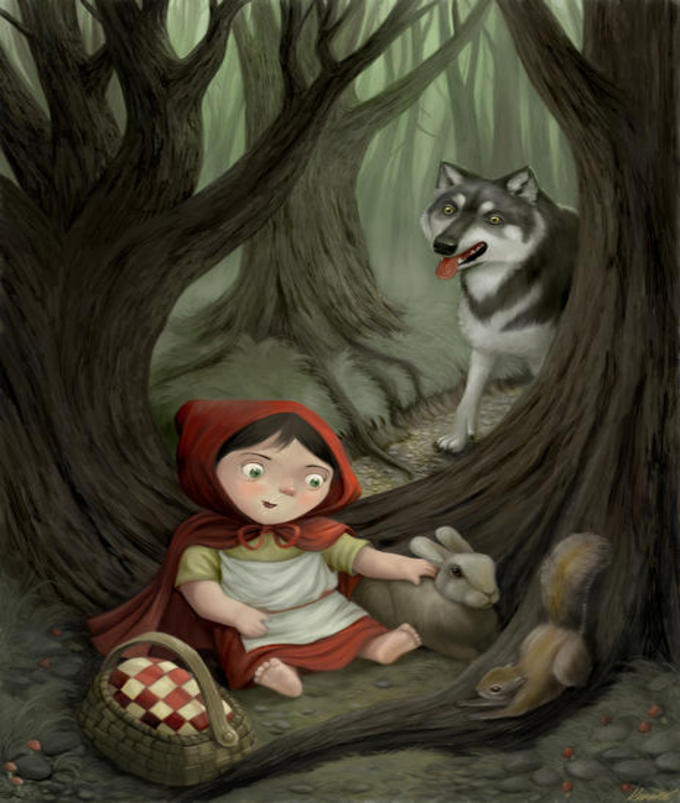
Kunja
A large variety of loaches, the usual fish weight is up to 5-6 kg, there are individuals weighing more than 10 kg. It lives from Kamchatka to Japan. Refers to anadromous species, spawning occurs in June-September, depending on the area. It feeds in the seas, however, does not go far, preferring pre-estuary areas and coastal areas. In the diet of adult kunja, juveniles and small fish predominate. In the Far East, it is a popular object of amateur fishing.
Kunji meat may vary in color depending on the season. In spring, the color is more likely to be white, in autumn - reddish or pink. Usually there are few bones in the product. The beneficial properties of kunja exactly correspond to most of the salmon family. The calorie content is also comparable to other types.
The taste is juicy and tender, close to trout. Due to these properties, it is widely used in cooking. And this at a fairly high cost.
Taimen
One of the most enviable trophies for any angler. According to some reports, it can reach a weight of 80 kg at 2 m in length, although it grows rather slowly. Life expectancy can reach 50 years. The body is torpedo-shaped, elongated, with powerful fins. In Russia, it lives in a vast area from the Urals (and some regions of the Urals) to the Far East and Sakhalin.
According to some reports, it can reach a weight of 80 kg at 2 m in length, although it grows rather slowly. Life expectancy can reach 50 years. The body is torpedo-shaped, elongated, with powerful fins. In Russia, it lives in a vast area from the Urals (and some regions of the Urals) to the Far East and Sakhalin.
A typical predator, large individuals in water bodies have no natural enemies. It gravitates towards rivers with a strong current, occupying areas after rifts, in pits, where it waits for prey. A wide mouth with sharp teeth allows the taimen to hunt even large fish and other animals. Taimen spawns in May-June.
Depending on the region, taimen may vary in color. As for meat, experts believe that older individuals are tastier than young ones. This type of fish is another great diet option. Calorie content - about 90 kcal. Medium fat content can reduce cholesterol levels and stress on the heart. There are layers of fat in taimen meat. The taste of the fish is delicate.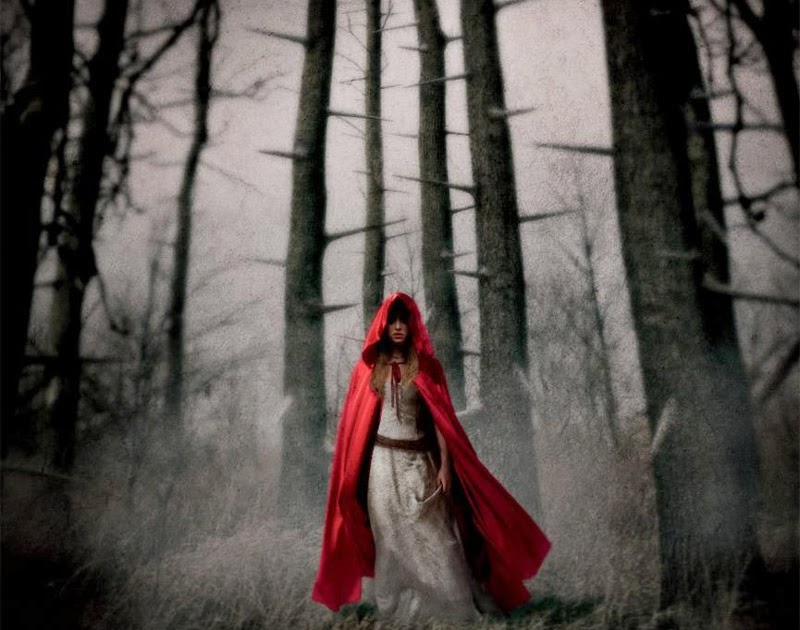 The main thing is to choose a more meaty option.
The main thing is to choose a more meaty option.
Table of BJU and calorie content of fish of the salmon family
Habitats
Representatives of the family in Russia live in the Azov-Black Sea and Caspian basins, rivers of the Arctic Ocean basin, in the Amur.
Spawning and reproduction
In the sturgeon family, there are both relatively sedentary species and anadromous fish spawning in rivers, where they rise from the seas and near-mouth areas. Sturgeons spawn in spring or early summer, eggs are laid on a solid bottom substrate. For some time (sometimes up to several years), the juveniles stay in the place of hatching, then roll down to the seas.
Beluga
Beluga is the largest freshwater fish. There is evidence that even at the beginning of the last century, individuals up to 2 tons in weight were caught. However, predatory fishing and regulation of river flow has led to a catastrophic decrease not only in the size of individual fish, but also in the abundance of the entire population as a whole.
The latest documentary evidence of the capture of beluga weighing about 1 ton dates back to the 80s of the 20th century. Apparently, now individuals larger than 200-300 kg are not found in our reservoirs. Beluga is a predator that feeds on other fish and some shellfish. Depending on the course of spring processes, spawning occurs in April-May. Adult beluga almost completely switch to eating fish, sometimes they eat shellfish.
Beluga meat is not particularly fatty, but the calorie content remains at an average level - 150 kcal. Fish is rich in protein compounds and other useful trace elements. In general, beluga helps:
- Improve mental performance.
- Reduce inflammation.
- Prevents the formation of stones.
The taste of the fish is tough, and some of the species have a characteristic creamy tint.
Siberian sturgeon
The Siberian sturgeon lives in the rivers of the Arctic Ocean basin (Ob, Yenisei, Lena, Kolyma, Yana, Indigirka) and Baikal. Reaches a weight of up to 200 kg with a length of 2 m. One of the most slow-growing representatives of sturgeons. Puberty occurs quite late. Spawning takes place in May-June, it is conservative in the choice of sites for spawning, annually rising along the rivers to the same places.
Reaches a weight of up to 200 kg with a length of 2 m. One of the most slow-growing representatives of sturgeons. Puberty occurs quite late. Spawning takes place in May-June, it is conservative in the choice of sites for spawning, annually rising along the rivers to the same places.
The diet includes any animal food he can find. Interestingly, while slowly gaining weight in the harsh conditions of the northern rivers, the Siberian sturgeon grows very quickly in a favorable environment. Thanks to this quality, it has become widely used for breeding in pond farms, where it grows 5-6 times faster than in the wild.
The energy value of sturgeon is one of the highest - almost 170 kcal. The variety of varieties allows connoisseurs of fish to prepare delicious dishes for every taste. At the same time, the useful properties of the species under consideration are also wide.
Here are just some examples of the positive impact on human health:
- Improvement in the functioning of the gastrointestinal tract.
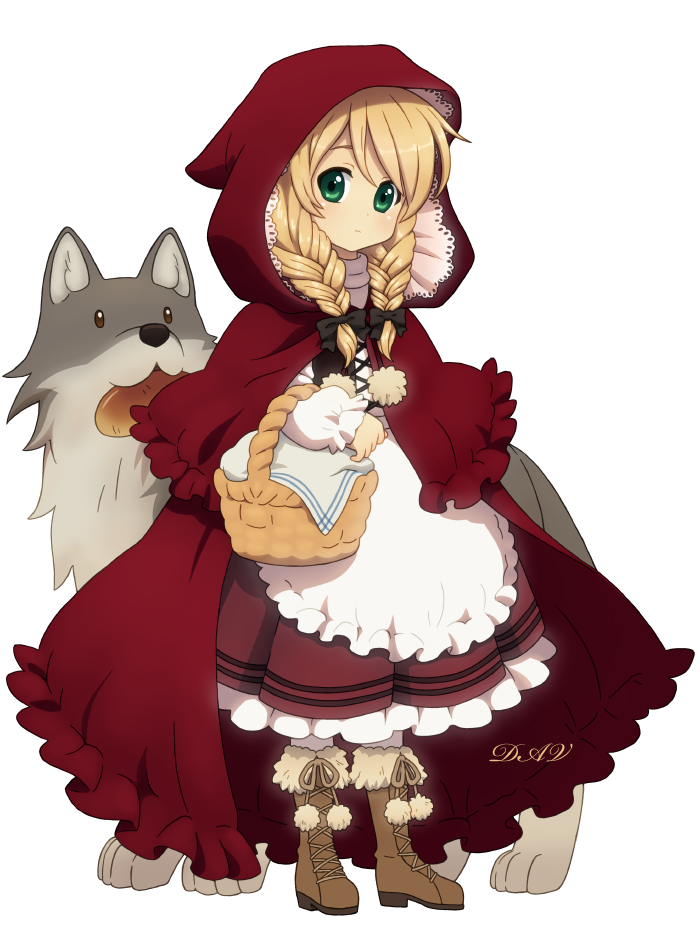
- Get a huge amount of vitamins and minerals.
- Increased immunity.
Glutamic acid gives sturgeon an excellent taste. The meat is juicy, like poultry or pork. However, cooking must be done with care. Otherwise, you can spoil all the good that is in the sturgeon.
Kaluga
Kaluga is endemic to the Amur basin. The second largest representative of sturgeons, after the beluga. It reaches a weight of up to 1 ton and a length of up to 6 m. In all likelihood, overfishing has led to the fact that now such giants are no longer found. One form of kaluga constantly lives in the Amur, the other feeds in the Amur estuary, rising into the river only to spawn. Kaluga spawns in May-July, between spawnings the fish “rests” for 4-5 years. A typical predator, the main food of adults is left by fish. Young Kalugas already in the second year begin to feed on fry.
Kaluga is a real predator by its properties. But, unfortunately, the conservation of this species is under threat due to unscrupulous human activities. Fish meat is practically boneless, so this species can be used almost entirely. During cooking, kaluga almost does not lose its mass. In many ways, and therefore the breed embarked on the path of extinction.
Fish meat is practically boneless, so this species can be used almost entirely. During cooking, kaluga almost does not lose its mass. In many ways, and therefore the breed embarked on the path of extinction.
Among the useful trace elements contained in fish, it is worth highlighting iodine, Omega-3, easily digestible fats.
Sterlet
The smallest sturgeon. Sometimes there are individuals up to 15 kg, but more often the average weight is 1-3 kg. Distributed very widely, but unevenly. Most numerous in the Volga basin. Restoration activities have led to the fact that stocks of sterlet are gradually increasing in many reservoirs.
Reaches sexual maturity faster than other sturgeons. Spawning occurs in May on a pebbly bottom. It is characterized by the fact that it never leaves freshwater reservoirs. It feeds mainly on mollusks, invertebrates, and can eat juveniles of other fish species.
Depending on the species, the energy value of sterlet meat may differ. For example, in European sterlet, it may not exceed 100 kcal. Whereas the Siberian variety has more than 300 kcal. The product is rich in proteins and amino acids, which gives it a special value. At the same time, the amount of vitamins and minerals is also high.
For example, in European sterlet, it may not exceed 100 kcal. Whereas the Siberian variety has more than 300 kcal. The product is rich in proteins and amino acids, which gives it a special value. At the same time, the amount of vitamins and minerals is also high.
Culinary properties of sterlet fully correspond to its high cost. You can cook it in any form, and the number of dishes can amaze the imagination.
Stellate sturgeon
Distinguished from other sturgeon by very elongated snout, long narrow body and contrast between light scales and darker body. It lives in the Caspian and Azov-Black Sea basins. In our waters, it reaches a weight of up to 10 kg, although cases of capture of 80-kilogram individuals are also known.
A typical anadromous fish, feeding in the seas, it rises to the rivers for spawning, but does not rise high enough, however. Spawning begins in May. The number of the main population is supported by fish factories that release juveniles into nature. Not so long ago it was one of the main commercial species of sturgeon, 15 years ago its fishing was completely prohibited in all seas.
From the culinary point of view, stellate sturgeon has excellent taste and appearance. Delicate and juicy taste goes well with the unusual elongated shape of the fish. Additionally, it should be said that the meat has a slight taste of iodine.
The calorie content of the species in question is 160 kcal. The stellate sturgeon acquired the greatest value due to its content of Omega-3 and Omega-6, as well as collagen.
Thorn
A strongly reduced species. The most viable group survived only in the Caspian Sea. Very rare in the Azov and Black Seas. It belongs to semi-anadromous species, hibernates and spawns in rivers, feeds in the sea. It reaches a weight of up to 30 kg, now, apparently, such individuals are no longer found. The appearance is typical for sturgeons. Easily crosses with other sturgeon species.
The ship is also listed in the Red Book, like Kaluga.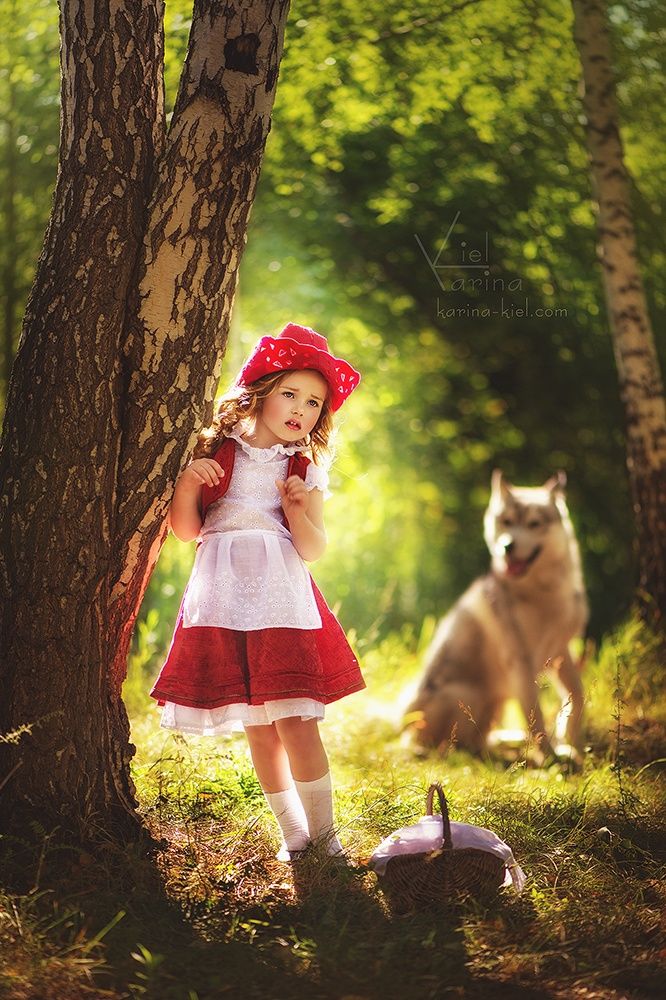 Therefore, it is only in theory to talk about its culinary advantages. The energy value of meat is slightly above average - 165 kcal. Yes, they are oily fish. But the presence in its composition of fatty acids and Omega-3 allows you to regulate the level of cholesterol in the body.
Therefore, it is only in theory to talk about its culinary advantages. The energy value of meat is slightly above average - 165 kcal. Yes, they are oily fish. But the presence in its composition of fatty acids and Omega-3 allows you to regulate the level of cholesterol in the body.
The spike is sour in taste, but in this case it is a plus. Another benefit of its meat is its low bone content. Therefore, you can eat meat almost entirely.
Russian sturgeon
Inhabits the Azov, Black and Caspian seas. The main river for spawning is the Volga, where it rises to Volgograd. It also spawns in the Don, Ural, Terek, Kuban. After that, it rolls down to feed in the sea. It has a rounded, relatively short snout. The average weight does not exceed 20-25 kg, individuals up to 115 kg were noted. The basis of nutrition in the seas is worms and mollusks, in deltas and rivers it actively eats fish.
Shovelnose
The shovelnose is an inhabitant of North America.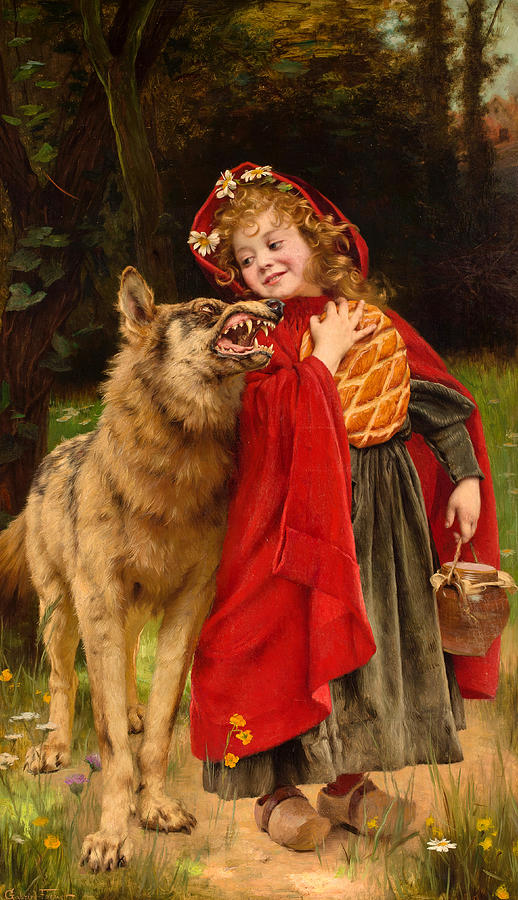 A relatively small fish, a little over a meter long and weighing up to 5 kg. The name contains its main difference - a wide, long and flat snout. A close relative lives in Kyrgyzstan and Turkmenistan - false shovelnose.
A relatively small fish, a little over a meter long and weighing up to 5 kg. The name contains its main difference - a wide, long and flat snout. A close relative lives in Kyrgyzstan and Turkmenistan - false shovelnose.
Bester
In order to increase the productivity of commercial fish farming, different types of sturgeon are often crossed. One of these hybrids is bester, obtained by crossing beluga and sterlet. Thanks to breeding work, a hybrid was obtained that combines a large mass of beluga and a short puberty of sterlet. This hybrid is grown in commercial farms in many countries. Bester does not reproduce in nature.
The properties of this fish make it possible to realize the culinary needs of a person to the maximum. In terms of both taste and useful properties of meat, this is a cross between beluga and sterlet.
Calorie content of bester is about 150 kcal. During processing, almost all cooking options are used, which only adds value to its meat.
Table of BJU and calorie content of fish of the sturgeon family
| Family | Name | 21 | 0.7 | 0 | 147 |
The health benefits of red fish
Salmon and sturgeon are classified as red fish for a reason. Although, in fact, only salmon have a red or pink shade of meat, and even then not all. The meat of these fish has a special taste and nutritional value.
Salmon meat is rich in omega-3 fatty acids. Eating fish with a high content of them strengthens the cardiovascular and central nervous system, well suited for dietary nutrition.